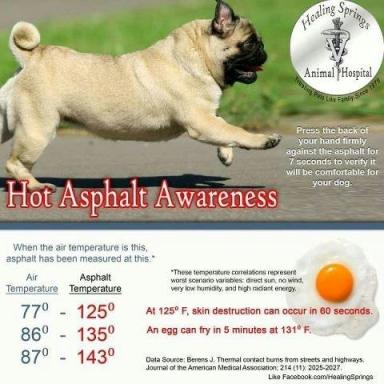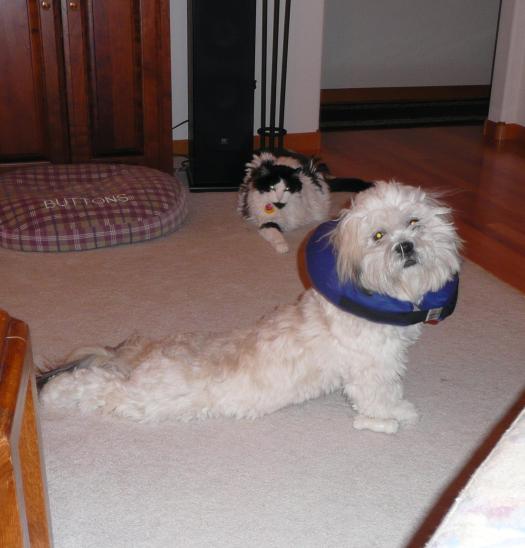 This new super poison has allegedly killed one of the Westminster competition dogs, a Samoyed. Please be aware that two possible events occurred: (1) The dog found it in a motel room or (2) someone poisoned the dog at the dog show. For those of you that travel with your pets and kids … this is a very serious implication.
This new super poison has allegedly killed one of the Westminster competition dogs, a Samoyed. Please be aware that two possible events occurred: (1) The dog found it in a motel room or (2) someone poisoned the dog at the dog show. For those of you that travel with your pets and kids … this is a very serious implication.
New Rodenticide Without Antidote Alarms Pet Toxicology Experts
2008 EPA Regulations May Have Unintended But Dangerous Consequences.
Jan 29, 2013 ~~ Julie Scheidegger DVM NEWSMAGAZINE
Fluffy got into the rat poison in the garage? Get the Vitamin K! Not so fast, warns Ahna Brutlag, DVM, MS, a diplomate of the American Board of Toxicology and assistant director of veterinary services for Pet Poison Helpline. The ingested substance may be bromethalin, the new toxin of choice for rodenticide manufacturers. There is no test save necropsy to detect its presence–and no antidote. Why are manufacturers switching to bromethalin? Because in 2008 the U.S. Environmental Protection Agency (EPA) issued a decision prohibiting the use of second-generation or long-acting anticoagulants in residential settings.
Manufacturers became compliant with these new regulations in 2011, with many using bromethalin instead of anticoagulants in their products. Brutlag says the EPA’s changes–designed to make rodenticide safer for children, pets and wildlife–may actually make diagnosing and treating rodenticide poisoning more difficult, thereby increasing the risk of harm. “We feel like it was well-intentioned but we’ve ended up with some really frightening consequences,” Brutlag says. “With anticoagulants at least we know there is a very effective test and there’s an antidote.” Bromethalin is a neurotoxin that affects mitochondria in the brain and liver.
According to the Pet Poison Helpline, it results in decreased ATP production, which affects sodium and potassium pumps; as a result, lipid peroxidation occurs, resulting in sodium accumulation within the cell. Edema of the central nervous system (CNS) may result. The rapid onset of bromethalin poisoning leaves veterinarians little time for error. “The symptoms come on faster and it’s harder to treat,” Brutlag says. With anticoagulant poisoning, veterinarians had three to five days before bleeding began–maybe a week before death. But with bromethalin, clinical signs associated CNS edema may be seen within two to 24 hours. Once the animal starts showing neurological signs–CNS stimulation or depression, abnormal behavior, ataxia, hyperesthesia, seizures, coma–successful treatment becomes more difficult and more expensive. An animal may have only a couple of days before succumbing.
Even in successful cases, Brutlag says treatment requires more emergency care and hospitalization. “Since there’s no antidote, decontamination is the most important intervention,” Brutlag says. But she worries that not enough veterinarians are familiar with how to decontaminate bromethalin exposure. According to the Pet Poison Helpline, the median lethal dose (LD50) of bromethalin for dogs is 2.38-3.65 mg/kg, with a minimum lethal dose of 2.5 mg/kg. Cats are more sensitive, with a significantly lower LD50 of 0.54 mg/kg. Severity is dose-dependent, but if the poisoning is discovered within 10 to 15 minutes of ingestion, it’s safe to induce emesis at home, Brutlag says. After that small window, induction of emesis should take place at a veterinary clinic where the animal can be monitored for acute onset of CNS signs and be given multiple doses of activated charcoal–four to six doses over 24 hours. “Should clinical signs arise, patients are treated with standard measures to reduce cerebral edema including IV fluids, mannitol, etc.,” Brutlag wrote in an impact statement for the EPA. Prognosis is poor for patients exhibiting persistent seizures or paralytic syndrome.
The negative impact on pets from bromethalin poisoning has Brutlag and others wishing for pre-regulation standards. In fact, manufacturers of the rodenticide brand d-Con have refused to comply with the new EPA standards, continuing to use an anticoagulant as its active ingredient. “Even though it’s a potent anticoagulant, at least it’s an anticoagulant,” Brutlag says. The Poison Pet Helpline and d-Con both cite the dangers of using a toxin with no known antidote as reason for the EPA to revisit the 2008 regulation standards. Brutlag concedes that it may be difficult to return to pre-regulation standards now that bromethalin products are on the market. For her, the best solution may be to simply educate pet owners and veterinarians. She travels the country giving lectures on the dangers of rodenticide poisonings–most recently at the North American Veterinary Conference in Orlando, Fla. She says most veterinarians don’t know about the EPA’s regulations and the change in active ingredients. “They’re shocked and concerned,” she says. “Being able to inform veterinarians that this change has occurred is crucial.”






















 … needed for one of our former fosters. I always knew this day would come … a day wherein a phone call is received concerning one of the dogs we’ve placed. Knew it would be difficult for the owners who opened their hearts and home to a rescue years long past to make this call.
… needed for one of our former fosters. I always knew this day would come … a day wherein a phone call is received concerning one of the dogs we’ve placed. Knew it would be difficult for the owners who opened their hearts and home to a rescue years long past to make this call.

 For several years now, we’ve seen and heard all the different news accounts of pets being made ill or out right poisoned by
For several years now, we’ve seen and heard all the different news accounts of pets being made ill or out right poisoned by 
 One day she was playing with her dog in the yard and the next, the dog was dying and doctors say it’s because little Shiloh ate something that could be in your own backyard. It was wild mushrooms and unfortunately, Shiloh died a few days later. Now the pet’s owner wants to make sure others are aware of what can happen.“It was hard, she was mostly my buddy.” Tami Mungenast has pictures all over her house of Shiloh – a one-year-old, 90-pound Great Pyrenees. It only took one wild mushroom to kill her.“I never thought there’d be a deadly mushroom in my front yard.” Shiloh ate one of the mushrooms last month and four days later, she died.“She slipped into a coma and liver shut down.” Tami was desperate to find out what killed Shiloh so it doesn’t happen to her brother. “I’m neurotic about it right now.” Everyday she combs her yard looking for mushrooms.Shiloh’s vet says there’s no way to tell for sure exactly what mushrooms the dog ate but after having the dog’s liver tested, they found these mushrooms had a toxin called Galerina in them. It can kill anyone who eats it, like Shiloh did. “In about 24 hours her liver started to shut down and within three days, there was nothing you could do.”
One day she was playing with her dog in the yard and the next, the dog was dying and doctors say it’s because little Shiloh ate something that could be in your own backyard. It was wild mushrooms and unfortunately, Shiloh died a few days later. Now the pet’s owner wants to make sure others are aware of what can happen.“It was hard, she was mostly my buddy.” Tami Mungenast has pictures all over her house of Shiloh – a one-year-old, 90-pound Great Pyrenees. It only took one wild mushroom to kill her.“I never thought there’d be a deadly mushroom in my front yard.” Shiloh ate one of the mushrooms last month and four days later, she died.“She slipped into a coma and liver shut down.” Tami was desperate to find out what killed Shiloh so it doesn’t happen to her brother. “I’m neurotic about it right now.” Everyday she combs her yard looking for mushrooms.Shiloh’s vet says there’s no way to tell for sure exactly what mushrooms the dog ate but after having the dog’s liver tested, they found these mushrooms had a toxin called Galerina in them. It can kill anyone who eats it, like Shiloh did. “In about 24 hours her liver started to shut down and within three days, there was nothing you could do.”